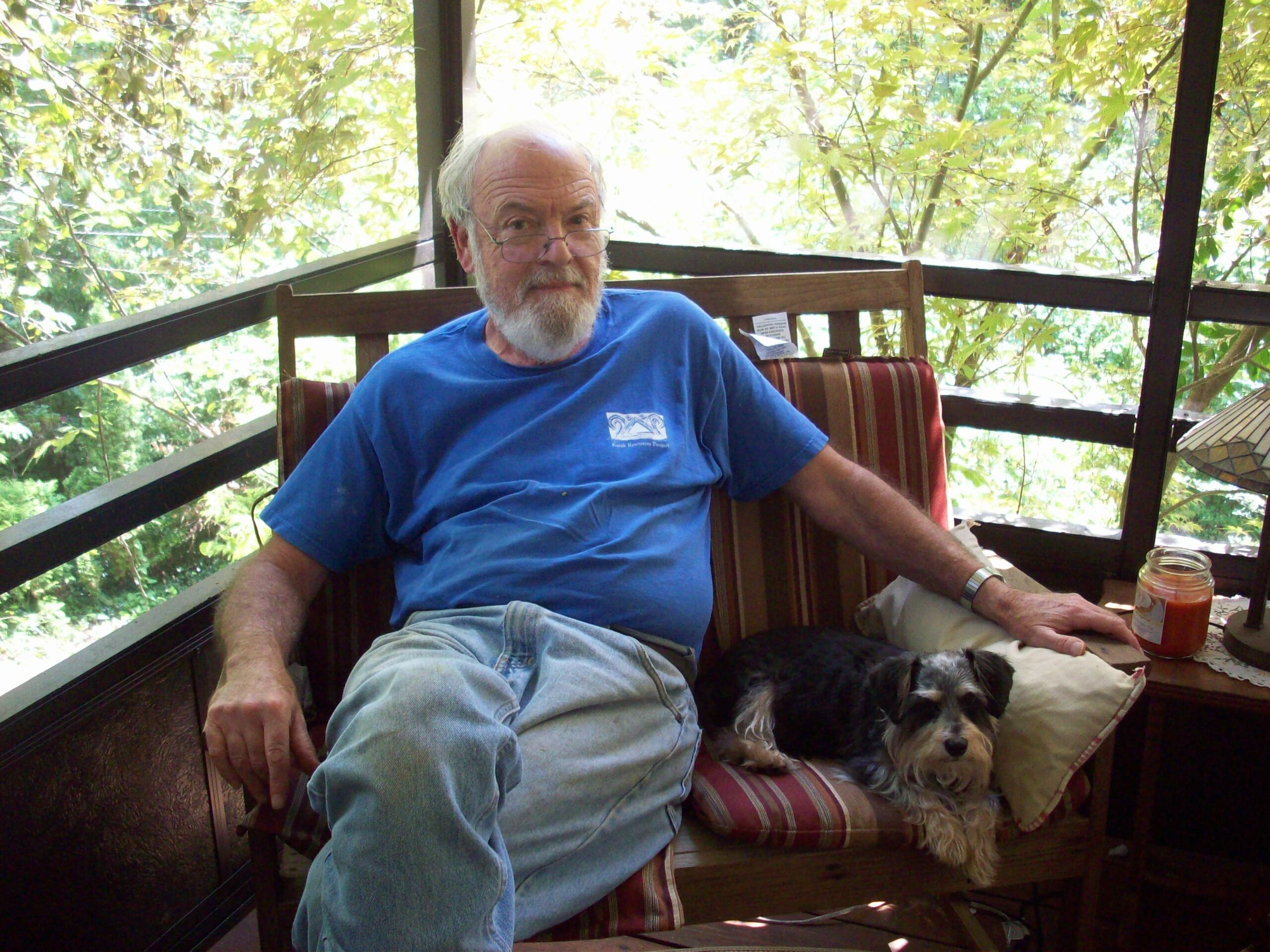Betty Bean is under the weather this week, so we’re recycling a column written in 2013 about Dr. Charles H. Faulkner’s then-new book about the September 1793 Cavett Station Massacre. And since the column was a combination of Faulkner’s history and modern-day issues of preservation versus development, it seems useful to report on the historic site’s current status.
Cindy Johnson is a member of Friends of Cavett Station, a new group that emerged out of a DAR-led research group. Johnson is a natural for this effort – she lives on Alexander Cavett Drive, plus her fifth-great-grandfather, James Campbell (a seven-footer known as “Big Jimmy”) helped bury the bodies of the victims of the massacre.
Friends of Cavett Station has partnered with Legacy Parks Foundation to raise funds to preserve the site and the associated Mars Hill Cemetery, and will be announcing plans soon. We will report what we know when they make the announcement.
Faulkner’s book is available here: Faulkner is professor emeritus and a distinguished professor of humanities at UT Knoxville. He received his doctorate in anthropology from Indiana University. He and wife Terry are West Knox residents. They were honored by the Knoxville History Project here.
SUMMER 2013 – Charles Faulkner slowed his Prius to a crawl as he topped the ridge on Broome Road a short distance from Middlebrook Pike. This, he said, is probably where the Cherokee scouts stood early on the morning of Sept. 25, 1793, and spotted smoke from the fireplace of Alexander Cavett’s fortified cabin in the woods below. They were part of a massive war party – said to number 1,000 warriors – who had marched all night, bypassing Campbell Station to stay on schedule to launch a dawn attack on Knoxville, which was sparsely defended and could not have withstood such an assault.
Ravenous mosquitos are the only danger facing modern day visitors to the old Mars Hill graveyard a short distance below the spine of the ridge. Contrary to the inscription on the monument placed there in 1921 by the Tennessee Sons of the Revolution, Faulkner is quite certain that this spot wasn’t the site of the Cavett Station massacre, where 11 Cavett family members and two militiamen sent by John Sevier to protect them were slaughtered. He believes the cabin stood some distance down the hill, just above one of several springs that form Sinking Creek and are now hidden behind the well-kept homes at the entrance to the Cavett Station subdivision, a few yards west of the intersection of Alexander Cavett Drive and Doublehead Lane.
“My wife, kids and all kinds of people went out there to help. We worked for two summers doing shovel testing, digging holes on a grid, down to the subsoil. We didn’t find it. The location is rather vague, but there’s still enough information that we knew the approximate location. That area is covered with subdivisions now,” Faulkner said.
He has written a new book (his fourth), called “Massacre at Cavett Station: Frontier Tennessee during the Cherokee Wars,” published by the University of Tennessee Press. It’s already available on Amazon and will be in bookstores soon. In it, he debunks old rumors and presents a balanced view, including the grievances of the Cherokee, who had been driven by a series of land grabs and betrayals at the hands of the whites to unite with the more militant Creeks and the Chickamauga Cherokee from Alabama, North Georgia and the Chattanooga area.
“The Indians did not buy or sell land, and the chiefs did not have authority to sign papers selling or giving away land, but some of them did it anyway, and the next thing they knew, here came the white people. The Indians thought when they signed treaties, white people could come farm, but they did not have a concept of private property. That was totally foreign to them,” Faulkner said.
This came after the turmoil of the Revolutionary War, when the Cherokee sided with the British and split into two groups, one of which opposed giving up land and making peace.
“They split off from the main group and went down to the Chattanooga area and became the Chickamauga. The Overhill Cherokee attempted to maintain peace with the whites,” Faulkner said.
In 1788, First Beloved Man and principal chief Old Tassel and Chief Abraham were attempting to make peace with the State of Franklin when they were murdered under a flag of truce by forces under the command of John Sevier. This enraged the Cherokee nation and drove the Overhill closer to the warlike Chickamauga and their leader, Dragging Canoe.
Skirmishes continued on the frontier for the next 5 years, boiling over in June 1793 when Indians killed a settler couple and militia forces tracked some of the perpetrators to the home of Old Tassel’s successor, Hanging Maw. The militia and launched an unprovoked attack on Hanging Maw’s house, killing a dozen people and wounding the principal chief, who, like Old Tassel, had advocated peace with the white settlers.
“When it came to treatment of Indians, the militias, in many cases, were just as brutal as Indians were. They took a lot of land and killed a lot of Indians. There really was no control,” Faulkner said.
In September, Chief John Watts got an army together and set out to avenge the raid on Hanging Maw by attacking Knoxville. War chiefs James Vann, Bob Benge and the murderous Doublehead shared command. They underestimated the time it would take to get to town, and when they found themselves eight miles west of James White’s settlement at dawn, they settled for an assault on Cavett Station.
Some reports said they panicked when they heard distant cannon fire and thought that they’d lost the element of surprise. Whatever the reason, they decided to pluck the low-hanging fruit. Amazingly, the settlers, led by Alexander Cavett and two Sullivan County militiamen – Francis Bowery and John Spurgeon – held off the initial assault.
WHITE FLAG: “The Indians sent Bob Benge in with a white flag, saying, ‘If you surrender, we will spare your lives.’ So they decided to surrender, and when they came out, the Indians killed them all, except for the little boy,” Faulkner said.
Watts was powerless to stop the ferocious Doublehead, who set upon the Cavetts and hacked them to pieces. Neighbors who buried the remains reported finding 13 dismembered bodies on the ground and human intestines draped on the wooden fence. Recordkeeping was sketchy in those days, except for the men, so it is uncertain exactly who else died, although they were probably Cavett’s children.
The 5-year-old boy was only temporarily spared, and was probably taken off to Alabama and murdered a few days later by the Creeks, although some reports say that Doublehead tomahawked him after he was placed on a horse by a Creek warrior (thus giving rise to the derisive nickname “Babykiller,” bestowed by his appalled fellow Cherokee). Faulkner believes that Alexander Cavett’s wife, Susanna, probably died the year before.
Watts, Vann and Benge were all sons of white fathers, a trend that became more noticeable over time. Faulkner said Benge, a redhead, was particularly feared among the settler population, who called him “Bench,” invoking his name as a bogeyman to frighten children into submission. Of the four chiefs, only Watts would die a natural death. Doublehead was murdered by his own people.
The graves in the Mars Hill cemetery are oddly arranged, with the newer ones up front and the burial sites of Alexander Cavett’s brother Moses and wife Agnes, next to a large oval-shaped section that is now overgrown and dominated by a mature hemlock tree. Someone who used to tend to the graveyard told Faulkner that there’s a good-sized depression where the soil is soft beneath the overgrowth.
And that, Faulkner believes, is the gravesite of the murdered Cavett family, whose deaths probably saved the residents of the new city of Knoxville from a similar fate.
MPC denies subdivision near historic graveyard
NOVEMBER 2016 – Bentley Fields subdivision has been stymied – at least for now – by an 8-7 Metropolitan Planning Commission vote. Opponents of the developer’s concept plan cited concerns over preservation of the historic Mars Hill Cemetery near the site of the Cavett Station massacre
This means that AKP Properties must wait a year to resubmit the concept plan, although making minor changes and submitting a new application could shorten the waiting time.
Commissioners Laura Cole, Gayle Bustin, Mike Crowder, Elizabeth Eason, Mac Goodwin, Charles Lomax, Charles Thomas and Janice Tocher voted to deny the plan. Herb Anders, Art Clancy, Rebecca Longmire, Chris Ooten, Patrick Phillips, Jeffrey Roth and Scott Smith voted against the denial.
In 1793, Alexander Cavett’s fortified cabin stood on the side of the ridge near what is now Broome Road, not far from Middlebrook Pike. The area’s original inhabitants were being pushed out by white settlers, and early on the morning of Sept. 25, 1793, a war party of up to 1,000 Cherokee warriors were marching toward Knoxville when a band of scouts spotted smoke from Cavett’s chimney. They’d bypassed nearby Campbell Station to stay on schedule to launch a dawn attack on the sparsely defended city, which could not have withstood such an assault. There is agreement among historians that the slaughter of the inhabitants of Cavitt’s Station distracted the war party from marching eight more miles to its primary objective – Knoxville.
Bentley Fields has drawn heavy opposition from residents of nearby Cavett Station and West Hills subdivisions. The argument is focused on the historical significance of the site, although some on the other side accuse the opposition of garden variety NIMBYism (Not In My Back Yard syndrome). Other concerns have been over lot sizes, drainage (there’s a large sinkhole on the site) and traffic problems on narrow Broome Rd.
Developer Glen Glafenhein said he has been careful to preserve the integrity of the site, paying particular attention to the old cemetery where the bodies of victims of the 1793 massacre may be buried. He introduced Travis Hurdle, operations director of Cultural Resources Analysts, who listed the steps AKP has taken, including probing tests and ground penetrating radar analysis done on the northeast side of cemetery, which didn’t find gravesites outside the cemetery boundaries.
Cole and Thomas were the most vocal opponents of developing the site; Clancy and Longmire had the most to say on the other side.
“Nobody even knew about this until somebody wanted to start developing it,” said Clancy, who praised Knoxville for its historic preservation efforts.
Cole disagreed: “This site is pretty significant in Knoxville’s history – and the reason Knoxville is doing such a good job in preservation is because a lot of people raised cain. And a lot of people did know about it. There are too many questions about what might remain for me to jump in and say I’m ready to see a development in there.”
Betty Bean writes a Thursday opinion column for KnoxTNToday.com.

